In their natural habitats, cichlids like to relax, breed, or hide in secluded places and that’s why they become timid, stressed, or aggressive if they have to dwell in a bare tank with no hideaways.

Generally, the best rocks to reduce stress and aggression in a cichlid tank are caves where the fish could retreat, claiming the place as their own territory.
However, the territory itself needs to be a safe zone and in which they really feel at home. That’s why you have to be extra careful when deciding which kind of rock is suitable as part of your aquarium environment. It is not an anything-goes kind of approach if you long to see your fish happy and comfortable.
Limestone is often recommended for these setups, but how about sandstone and ocean rockwork? Furthermore, is adding live rock as a rockscape okay? Also, though beautiful at first glance, is lava rock safe for cichlids?
As you try to get to the bottom of these, remember that there is no general answer. There were over 3,000 cichlid species the last time I checked and from various climatic and geographical conditions.
So you have to be concerned about what stones will suit a Mbuna-centered African cichlid aquarium if you have that species. Some of these aquarium decorations can turn out unsafe, because they may have sharp edges that can pierce the fish and cause injuries as they slide through.
At the same time, you should not overlook the fact that your aquarium should always make an aesthetic statement to its viewers. To achieve the best results and overall good-looking cichlid tank you’ll need to make an educated choice of rock decor while keeping the fish protected from sharp edges.
Anyway, let’s get to the rock bottom of this matter for an in-depth analysis.
Here you can see a short overview table of all of the products I reviewed:
| Rock Name: | Type: | Price Bracket: |
|---|---|---|
| 1. Penn Plax Stone Replica | Artificial | $$ |
| 2. Natural Slate Stones | Slate | $$ |
| 3. Aqualexs OHKO Stone | Sedimentary Clay Rock | $$$ |
| 4. Marina Decor Cave | Artificial | $ |
| 5. Carib Sea Rock | Cured Live Rock | $$ |
Beginner’s Guide to Rocks and Their Role in Cichlid Fish Tanks
I believe it is pointless buying a rock that your cichlids won’t like.
Aside from that, you need to be familiar with the mechanics and chemistry that will be going on after you add the decorations to your aquarium.
The following comprehensive guide can be used as a checklist while buying aquarium rock for your cichlids:
1. Size of the pieces
There are rocks with a large surface area per piece.
Here is why the size matters when you buy rocks for a cichlid tank:
If you have a small tank, you should not go for a large-size rock that is going to displace water and take considerable space, leaving your tank inhabitants with little space to swim through or shoal. The rock size should be proportionate to your tank’s size.
On the other hand, if you have small cichlid species, do not go for too big stones with equally too large caves. The little fish will not feel safe in such an enormous size and they feel too insecure to roam through it confidently.
By the way, this mindset is evident in many creatures, even we humans.
We feel safer in small rooms we can adequately and easily monitor.
2. Contrasting colors
This is what you should bear in mind as you decide the right color for your cichlid aquarium:
When the aquarium lights are on, white rocks reflect much light that could prove too bright for your fish.
This can hamper their movements.
If your tank has little or no shade it is best to buy the dark-colored rocks.
You should also consider the rock color and its contrast with the aquarium’s background to bring out the taste.
Darkly colored rocks sit well on white aquarium sand, for example.
3. Weight should be taken into account
The weight of the rock also matters. This is what you should think of while deciding the appropriate rock weight:
Most cichlids love to play around and once in a while they are going to bounce or pounce on objects.
For that simple reason, the rock you choose should be heavy enough to stand its ground.
A smaller, lighter rock may be tossed about, thus proving unfit for its purpose.
If you have active, territorial cichlids, get them sizable rocks.
Smaller species can comfortably swim through lightweight rocks without creating a scene.
4. Simulating the natural biotope
Where the fish originally came from is one more factor you must never overlook if you want to successfully simulate their biotope.
Here is what you should make sure to get right when selecting rocks that make your cichlids feel at home:
- In lake Malawi where a great portion of aquarium-suitable cichlids come from the rock is mainly limestone but sandstone can also be used.
- For recreating a lake Tanganyika biotope in your aquarium you’ll want to add smooth, round stones.
- South American cichlids come from various water bodies, too many to be listed here.
Mind that cichlids can thrive with any type of rock and recreating their natural environment is not vital.
5. The texture is what makes or breaks a safe environment
Even the texture of the rock should not be overlooked.
The fish move around and they get in touch with the objects in your tank.
Here is why the rock’s texture matters to the well-being of your aquarium cichlids:
Rough, sharp-pointed rocks can wound your fish.
Ensure the rock you choose for your cichlid’s aquarium is smooth enough, or that it’s a pre-treated type of stone with smooth edges.
Some aquarium rocks such as limestone are cichlid-friendly by definition and do not need additional treatment.
If such razor-like rock forms part of a hideout cave, you can imagine what will happen to your fish when they swim through.
6. Aesthetics and Visual Appeal
Obviously, apart from the love of pet fish, the other essence of having an aquarium is to enhance a room’s appearance, be it in the office or the house.
So here is what should guide you when you balance between the right rock and the overall beauty of the aquarium:
Rocks form a great part of an aquarium’s appearance so you should select them based on the taste you hope to bring out.
The rocks should at least blend well with your décor.
Choose rockwork that is in contrast with the background or the substrate’s color.
You should balance between small and large ones, and try to imitate a natural-looking environment.
7. Hideouts are to be provided
Many fish love to have some private zones to visit to cool off or hide.
I suspect they meditate there too.
These are their hideaways and well-chosen aquarium rocks are usually the best structures for that.
Here is what you should bear in mind when choosing rocks that can act as hideaways for your cichlids:
It helps a lot if the aquarium rocks have caves or holes where cichlids can swim to relax, hide from intimidators, breed, or even hunt for food.
If you have territorial fish species, you should use rocks to create some caves for them or buy ones with ready-made caves.
Cichlids are notoriously aggressive and having a hideout significantly reduces stress levels in the aquarium.
The crevices and caves are also significant in that they serve as colonies for beneficial nitrifying bacteria.
8. Hygiene is your top priority at first
You can introduce dangerous bacteria into your tank by the simple act of choosing the wrong rocks.
Sadly, at times it is difficult to pinpoint what exactly caused the fish sickness or death.
The fish-keeper might blame some fertilizer or their new Cichlid’s fish food for this when the real culprit is the contaminated rock they happily put in there just the other day.
So this is what you must pay attention to as far as new rock hygiene for aquariums goes:
You should only use thoroughly cleaned or sterilized rocks for your home aquarium.
This means that you must first make sure the seller has a good reputation in the proper handling of the product.
Do not buy from little-known merchants since some of them may sell rocks that carry algae spores or parasites.
On the other hand, while it is true you can pick up a rock anywhere (hills, beaches, riverbanks, riverbeds, etc.; you don’t always have to buy) and place it in your tank, if it is treated with inefficient expertise you risk harming your tank inhabitants.
That’s where “cheap is expensive” comes in. You can pick a rock from an area that was recently sprayed with pesticides, for instance.
These chemicals will end up in your tank.
9. The deterioration factor
Rocks age differently.
Some tend to last longer without crumbling, even in water.
Here is what to remember about aging while you buy a rock for your aquarium:
A rock that seems beautiful and suitable for your fish tank may happen to have a short lifespan.
This means that soon it begins to show signs of aging, darkening, and crumbling bit by bit while releasing harmful chemicals in the process.
If possible, you need to go for long-lasting rocks.
10. Different types will alter the water’s parameters differently
The chemical composition of the rock should be the factor you give much weight to when choosing.
Here is why you should carefully choose aquarium stones with a cichlid-friendly chemical composition:
Rocks composed of hard minerals will harden your soft water, thus altering the chemical stability in your tank.
For instance, calcareous rocks (rocks partly formed from calcium) will leach out calcium into the fish tank’s water column, raising its Ph value and, at the same time, increasing its hardness.
If the result is a hostile environment for your soft water fish, much harm can occur.
Generally, South American cichlids like soft water and African cichlids like hard water.
Therefore a sound choice of rockwork can actually help with maintaining the right aquarium conditions.
I want to illustrate this further using the following types of rocks commonly used in home aquariums.
I have highlighted their characteristics so that you quickly figure out what to expect from each.
This might help you decide which one suits your particular tank better:
- Live Rock
The name might also create the impression that there are dead rocks and living rocks.
Ironically, the so-called ‘live rock’ is actually a composition of skeletons of dead corals, which are collected from coral reefs.
However, the rock is populated with millions of marine bacteria in its crevices and that is why it is said to be “live.”
These bacteria are generally valuable in your aquarium.
They do not stop there; they finally turn nitrate into nitrogen gas.
The result is a safe and non-toxic habitat for your fish.
Live rock is usually harvested from the ocean and into a saline aquarium to create a healthy saltwater environment for the marine fish.
Here is what you should know about live rock as far as cichlids are concerned:
While live rock creates territories for your cichlids to rule, it also can raise the Ph and the hardness of the fish tank’s water.
This can be beneficial for African cichlid species coming from the lake Mbuna, Victoria, or Tanganyika.
However, before adding it to our freshwater tank you’ll need to “kill” the live rock and all the marine organisms living on and in it.
This you achieve by soaking (some aquarists call it “cooking”) the rock in freshwater for 4 to 6 weeks. M
ake sure the tank or container that you use for the cooking process doesn’t get any light in the time being.
You need to check for ammonia and nitrite spikes, and also for the level of salinity.
When the water parameters fall down to stable levels then the rock is cooked. If the salinity is still high, change the water. In fact, keep changing it until it is on a level safe for a cichlid.
All of this is done because sea microorganisms in a live rock may be unsuitable for a freshwater tank, so turning it into a dry rock helps.
You can achieve this by using a pressure washer, or a bleach bath.
Hosing it down with hot water also helps, but it will take more than one cleaning session.
- Limestone
Limestone is formed under the same conditions as live rock.
Basically, they are composed of calcium carbonate (CaCo3).
So limestone, dolomite, aragonite, and calcite are just different forms of calcium carbonate, in a nutshell.
Generally, they are formed when pieces and bits of many skeletons and shells of sea creatures together with other hard junks gradually form layers upon layers around reefs, while compacting or gluing together in the process.
Anyhow, here is how the choice of limestone might affect your water parameters:
The limestone does not normally react with water.
But since limestone is calcareous (that is, with calcium as one of the composite elements), it is at some point capable of hardening your water and raising the Ph.
This happens when the calcium itself slowly dissolves in the aquarium’s water.
Indeed, if you want to increase your water Ph, a straightforward way is to add limestone powder, which you get by crushing limestone rock.
Limestone is recommended for use in African cichlid tanks. South American cichlid tanks prefer soft water and limestone could be harmful to them.
Nevertheless, it should be noted that limestone in itself is harmless to your fish.
- Lava Rock
Following a volcanic eruption, the flowing, super-hot lava cools into what is known as lava rock.
Depending on the degree of cooling or geographical location, lava rocks come in various colors and types.
The ones I have commonly seen are either gray or black.
As for types, there are over 600 types of lava rocks out there.
When it concerns a cichlid aquarium, here is what you need to know about lava rocks:
Lava rocks are durable because they are hard.
They are also porous, thus ideal for breeding the denitrifying bacteria in your aquarium.
You can try to find one with a cave or a hole for the cichlid to swim through.
That being said, this type of rock is rather sharp and may harm fish unless treated beforehand.
Lava rock contains hard elements that can harden soft water in a cichlid aquarium.
Though this is a sharp type of rock there are tons of cichlid tanks that use it because of how light it is and the very natural look it has.
- Sandstone
A sandstone, as the very name hints, is a compact collection of grains of sand that bind together (layer upon layer) over a long period of time that spans centuries or more.
As a cichlid keeper, this is what you should know about sandstone:
Sandstone is a common choice for an African cichlid tank because it can raise PH and water hardness.
A vinegar test should help you decide which sandstone is safe for your aquarium.
Vinegar will fizz if you add it to sandstone with excess Calcium Carbonate that is bound to harden your aquarium water.
One issue with sandstone is that at some point, if not carefully chosen, it may become soluble and begins to erode so do not expect it to last long enough.
The solubility is due to the fact that some of these rocks contain more clay than others.
The clay can also mud your tank.
The important thing about sandstone is that whenever you pick it for your cichlid fish tank, you should make sure it’s hard and not crumbly.
What Are The Best Rocks For Decorating A Cichlid Aquarium?
The best and most risk-free cichlid rock should help with simulating the biotope of the fish, provide some shelter and also have no sharp edges while maintaining an attractive look.
Below you’ll only find reviews of products that I’ve personally seen to work well.
Here are the best and most non-hazardous rocks for a cichlid tank:
1. Penn-Plax Stone Replica Aquarium Decoration — Inert and will reduce aggression
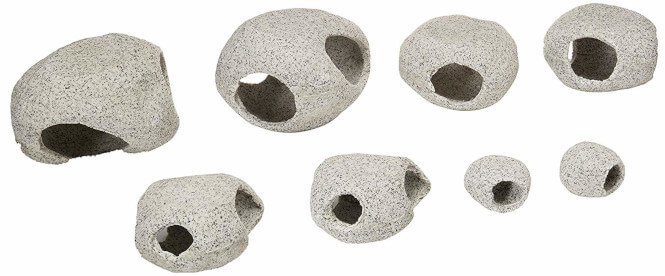
Click here to see the current price + more photos on Amazon.
If you are looking for the best artificial and inert cichlid rock I can recommend this one any day.
First, if you place an order, the items arrive buried in many layers of wrappers to keep them from breaking.
They are fragile, so this extra care is essential.
At times due to some unforeseen reasons, they do get broken during transit.
But I appreciate the fact that the manufacturer does all that is humanly possible to wrap them well so you can receive them all intact.
I understand the pain of receiving the long-awaited order in lousy shape as though the delivery guy turned it into a punching bag.
Anyway, about the product itself – if you see these rocks inside an aquarium, you will agree with me that they are lovely to watch, therefore an important part of the decor.
All the territorial cichlid species also love them because they have more than enough hideaways.
My cichlids immediately started exploring them and hanging out in the artificially-made caves.
These aquarium rock caves are ideal for reducing aggression and providing an interesting environment for your fish.
If your cichlids are too aggressive, ensure the hideaways are not close to one another.
You can use other decorations as obstructions to block their vision so that the aggressors may not see each other.
These are artificial rocks made of resin and designed to look like granite rocks.
For this reason, they are cheaper, though they serve the same purpose as the original.
Each set has 8 pieces of rocks, some big, others medium while the rest are small.
There are smaller ones and bigger ones to suit each of your cichlids, depending on their size.
If you have very small cichlids at the moment, I suggest you use the smaller rocks and keep the big ones for the time you will have big fish.
On the other hand, if you place the smaller ones for the big cichlids, the fish might get stuck inside the cave (I did read about a case like that while doing my purchasing research).
Again, if you have a small tank, I advise you do not to use all of these rocks in it, to avoid congesting the place.
The downside to these rocks is that they are somewhat rough enough to injure the cichlid.
Some come with really sharp edges (especially the inside parts).
Take the time to flatten the sharp points with a file or a spoon prior to putting them in the tank.
Definitely get these artificial rocks if you want to reduce stress and aggression in your cichlid tank.
Inspect for and sand the sharp edges and you’ll be very content with your purchase.
Advantages:- Lots of hideouts, which helps immensely with reducing aggression
- They are affordable.
- They come in different sizes.
- They are inert so won’t interfere with the aquarium’s water parameters.
- They have flat tops you can use to stack other aquarium ornaments.
- The looks are actually fun.
- They tend to have sharp edges inside the holes (easily identifiable, and a file or sandpaper takes care of the issue).
- They are smelly when they arrive, due to the glue used to bind the materials (it’s safe, but you should first soak them in a bucket to get rid of it)
2. Natural Slate Stones – My Cichlids loved this inert flat stone
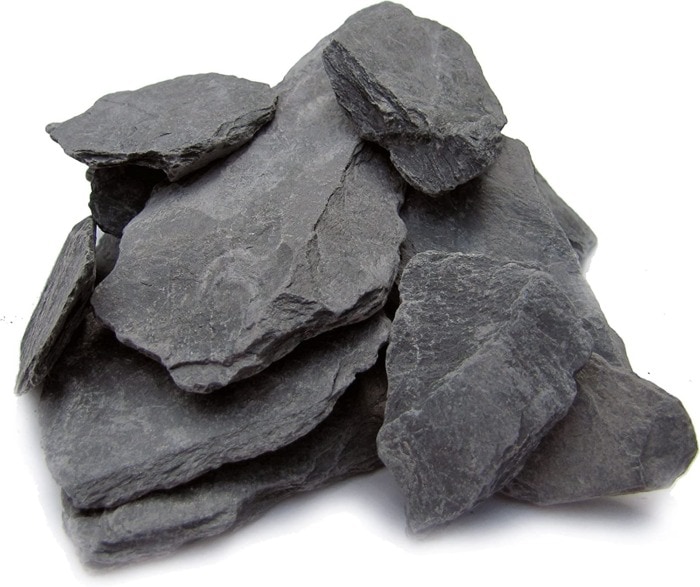
Click here to see the current price + more photos on Amazon.
Slate rocks are right behind Dragon Stone in my personal list of rocks that just look amazing in a cichlid tank.
The particular ones I’m recommending here come in pieces of between 3 and 5 inches (not a super hard rule though, expect some variation).
If you have a smaller cichlid tank you could also check the smaller 1 to 3 inch variety by the same seller.
These natural slate rocks sit absolutely fantastic on a bright sandbend.
Something like pool filter sand as a substrate will make them pop, but I’ve seen black sand cichlid tanks with these and the overall look was still mesmerizing.
What I like about slate rock is that you don’t need to be a hardscape guru to make it look like your tank’s about to enter a contest.
I’d just throw mine randomly on one side of the tank, and arrange a cave-like structure on the other end.
It honestly doesn’t take a genius and the underwater rock gallery that forms looks brutally good.
As for my cichlids, they seem to like this type of flat surface.
For some reason my Mbuna species would prefer sitting on the rocks when they’re not cause havoc elsewhere in the tank…
This type of surface probably reminds them of the smooth rocks that are found in their natural habitat in the African lakes.
As for how the slate rocks affected my tank’s water parameters – my pH did not move.
The seller claims these are inert and in my experience that’s true.
One thing you should know before you buy these is that they can be dusty initally.
The dust would cloud the water in your fish tank, so you’d want to rinse the slate stones thoroughly before putting them in.
Advantages:- Looks great without having to put too much thought in the aquascaping
- Decent price
- Inert so you won’t have to worry about jumping water parameters
- Cichlids actually seem to enjoy hanging around those
- No curing needed
- Dusty, the stones need a good rinse or you risk clouding up your cichlid tank
3. Aqualexs Aquarium Ohko Dragon Stone Rock — Best looking
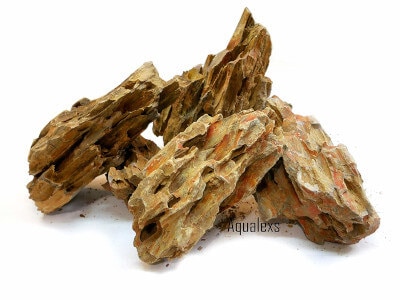
Click here to see the current price + more photos on Amazon.
Ohko stone is a Japanese native endowed with natural beauty that will give your aquarium the needed extra aesthetics.
The rock has many holes caused primarily by erosion which are ideal for dwarf cichlids as small caves for hiding away.
They come wrapped in decent brown paper and a layer of bubble wrap for buoyancy.
These stones are moderately heavy and will hold their ground firmly against pushers.
Because every package is a combination of various sizes, you can build caves with them, making good use of the small and the big ones.
They are also of different colors with some lighter and others darker so this is part of the reason they are attractive.
Anyway, in my opinion, these rocks have the best aesthetics on this list.
They just look bold and somewhat aggressive.
The downside is that the Aqualexs Ohko stones come with a lot of clay stuck in the holes, so you need to give them a deep brushing under running water.
Nothing complicated, though.
Just use a toothbrush or wire brush.
Another con to this type of rock is that it can be brittle and can break easily if not handled with care.
Buy the Ohko Dragon Stone if you want to get the best aesthetics for your cichlids’ aquarium and you’re okay with doing a bit of rinsing beforehand.
Advantages:- Unique texture contributing to a fantastic overall look.
- They come well-packed and so cannot break easily on shipping.
- They are inert.
- They have many hideaways for smaller fish and dwarf cichlids.
- They are heavy enough and so cannot be easily overturned by the violent cichlids.
- They come in various sizes, making it easy for you to build a cave or just an aquascape.
- They come with clay that you have to wash away.
- Can be brittle.
4. Marina Decor Polyresin Cave – Good size & attractive colors
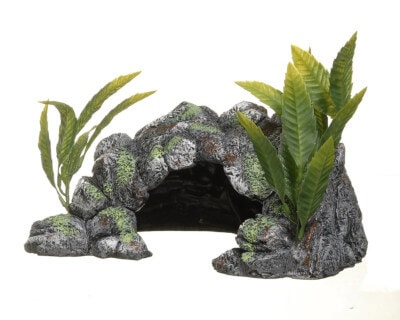
Click here to see the current price + more photos on Amazon.
It is a man-made cave, but great creativity has been put into place to make it as natural as the oceanic rock caves.
It is adorned with a handful of plastic plants, added to spice it up.
It continues to get more natural once you let some algae grow on the semi-dark cave.
It is best you place this décor near your filter, so the currents can sway the plant leaves, to make them even more natural and lively.
It is large enough to accommodate at least 3 African cichlids if they can agree to stay together.
I’ve seen too many cichlids fall in love with this piece of man-made aquarium cave.
It’s ideal for cichlid tanks that may have an issue with aggression or simply if you want to get rid of the bare-bottom look.
However, there is a problem with the attached plants.
First, you may find some not glued well and can easily break off.
You’ll have to handle them with care.
They also have sharp edges on the bottom, which you should slightly trim.
The cave itself can too have sharper edges on the inside, but nothing a little sandpaper can’t fix in minutes.
The globs of glue used to attach them are somewhat protruding awkwardly and do not help in the grand scheme of things to bring out a lovely appearance…
Once you overcome these, it will turn out perfect for its purpose.
The cave, as compensation for all these shortcomings, eventually lasts long in the fish tank due to its high-quality materials.
It is as heavy as it should be, though if a full-grown, wild cichlid gives it a powerful knock, it could roll over, in which case you should blame the cichlid.
Buy this artificial rock cave to provide playful or stressed cichlids with a good-looking place for relaxation.
Advantages:- It is made of fish-friendly material (polyresin).
- It is nice to watch it in your aquarium.
- It is affordable.
- It gives your cichlid a perfect spot to withdraw for meditation, hunting, breeding, or hiding if threatened.
- It is quite poorly designed since there are some sharp wires you have to cut off with pliers.
- The plants are also not firmly attached.
5. Carib Sea ACS00372 3 Base Rock — Cured, Ready-for-Use, and Porous
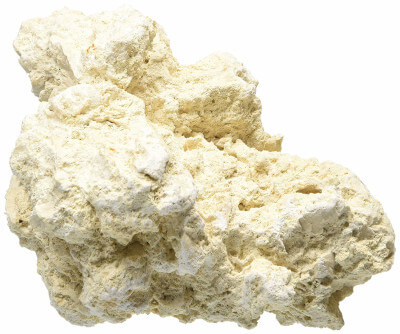
Click here to see the current price + more photos on Amazon.
This ocean reef rock looks cool from whichever angle you look at it, and so will no doubt make your cichlid aquarium more real by enriching the decor.
It is actually one of the best sea rocks you can have for your cichlid tank but it does lean on the pricey side.
There are also numerous crannies, nooks, and pores around it.
These are all good for the beneficial bacteria so it makes a perfect live rock if need be, although it comes as a dry rock.
It comes to you already cured to save you from having to do it yourself.
But you will have to rinse it to remove the dust that will cloud your tank.
Each package comes with different sizes and shapes of rocks, so we are not actually talking about one rock per see.
I suggest you soak them for about 24 hours after the rinsing.
Depending on the shipping conditions, at times the rocks may arrive with rubble or broken smaller pieces.
You can still find room for these pieces in your aquarium so do not dismay.
The rock is quite lightweight, but it has a large surface area making it look gigantic, so only a daredevil cichlid will want to waste time trying to roll it.
It is rather pricey, but it is one rock you can have in your tank for years because it hardly crumbles or dissolves if left on its own.
Buy this cichlid tank decoration If you’d like to provide it with natural-looking brightly colored stones that will last for years.
To completely cover the bottom you’ll need roughly 10 pounds of rock for every 10 gallons of tank volume in the case of standard aquarium sizes.
Advantages:- It is porous, thus a breeding ground for the beneficial aquarium bacteria.
- It is large and cannot easily be shaken by the cichlids.
- It will not easily crumble or dissolve; therefore, it never affects your water parameters.
- Natural appearance.
- It is pricey.
What Are the Best Types in Regards to Fish Safety?
Before I answer this, I should emphasize that the type of fish also comes to play when you are deciding which aquarium rock is the safest.
If you are keeping cichlids, it still matters which type of cichlids since there are several cichlid species with varying characteristics, depending especially on the environmental conditions in their natural habitat.
As I said, some do well in hard waters while others are fine only in soft waters.
However, most cichlids have irreducible minimums you have to meet when getting rocks safe for their well-being.
Taking these “irreducible minimums” into account, here is my simplified guideline for those asking what rocks are safe for cichlids:
1. Smooth Rocks
Rocks with sharp edges are going to injure your cichlids, regardless of which species you are keeping.
If you have to use such a rock, take the time to sand the sharp edges down to render them safe for your tank.
Anyway, wherever possible, go for smooth rocks.
2. Inert Rocks
These are rocks that do not have chemicals that can affect the water parameters of your tank.
Most “fake,” decorative, or artificial rocks belong in this category.
They leach out no chemicals into your fish tank so with them soft water will remain soft while hard water will remain hard.
Sometimes you have to forego a real rock for the sake of your fish’s safety.
The artificial rocks may not be natural but they serve the same purpose as the real ones on top of being inert.
As long as the fish can’t tell the difference between the fake and the genuine, all is well.
3. Hard Water Rocks Vs. Soft Water Tanks
A rock with high mineral contents is hazardous for a soft water tank.
If yours is a soft water tank with South American cichlids, ensure you go for a rock that does not leach out hard elements like calcium.
However, such a rock is safe and actually beneficial for a hard water tank with African cichlids such as the Mbuna species.
In these cases, some rocks may actually help with achieving the right water parameters.
For example, if where you live the water is really soft, you can buffer it with a rock that’s high on minerals such as limestone or sandstone.
Where to Get Some For Cheap?
After all, is said and done, you want to end up with the best rock you can get at the lowest price possible.
The truth is that every buyer is “on a budget” in some way, for nobody is out to waste money.
Therefore, to help you save extra bucks, here is the way to get the cheap cichlid stones:
You must not compromise with fish safety in the name of securing cheap or free cichlid stones. You may be tempted to pick a stone anywhere because it is free, not knowing it is laden with harmful chemicals or organisms.
You end up paying a heavy price for it in the long run. If you find that buying from a local store is really expensive for you at the moment, you should try buying online.
Online shopping has become popular because it is cheaper compared to over-the-counter buying. When the long chain of middlemen is cleared and you have to buy directly from the maker, the price of quality aquarium rocks drastically comes down.
You Should Probably Consider These Too
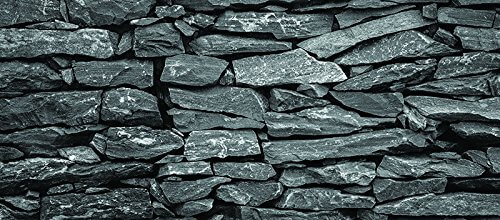
1. Dark Silver Flat Rock/HD Stone Aquarium Background 21″ x 72″/Rocky Fish Tank Background
Click here to see the current price + more photos on Amazon.
You can use this lovely gravel background to decorate your tank further.
It is easy to tape on the outside of your tank and is of high-quality material.
You can add it to your cart if you feel it’s time you gave your aquarium a new rocky look without breaking the bank.
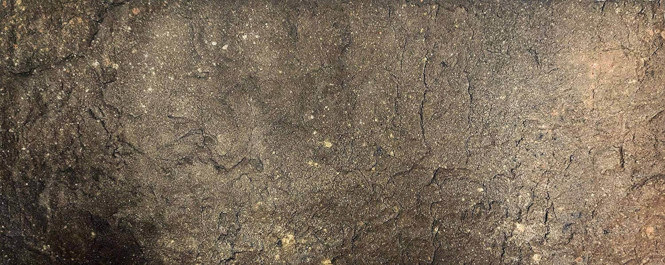
2. Universal Rocks 48-Inch by 20-Inch Rocky Flexible Aquarium Background
Click here to see the current price + more photos on Amazon.
You can also try this brown, easy-to-install, and durable background.
If you have limited space, the more reason you should go for it since it’s too thin to take considerable space.
It is also flexible so it’ll fit in without tearing.
FAQs
What type is best to use in a cichlid tank?
African cichlids prefer hard water and high pH which makes all types of Calcium Carbonate rocks ideal for them.
These are rocks like limestone, dolomite, calcite, and aragonite. Other types that increase the hardness of aquarium water are also the lava rocks and sandstone. South American cichlids would benefit from inert rocks that do not alter water hardness and pH.
These are basically all the commercially-sold artificial rocks. Natural slate rocks and Ohko Dragon stones don’t affect water parameters as well, making them some of the best choices here.
Are lava ones good for cichlids?
There are around 600 types of Lava rock and not all are made equal. Some contain minerals that would raise the pH in a cichlid tank and others are inert.
Lava rocks are good for cichlid tanks but you need to make sure that the type you’re getting suits your desired aquarium parameters.
Also, most lava rocks should be thoroughly checked for sharp edges before putting them in a tank with live fish.
Is limestone a good option for African cichlids?
Limestone is one of the best options for African cichlid aquariums. This type of rock stays true to the water parameters that African cichlids require. Limestone will maintain hard water and high pH, which are basically ideal for African cichlids.
Do cichlids prefer sand or gravel as part of their aquarium aquascape?
Both are acceptable but experts in the hobby agree that sand is probably the better option. It’s easier to manage and looks good beneath the rocks.
Also, many cichlid species like to dig the substrate, which sand makes easier and safer for them.
In some instances aquarists use crushed coral, coral sand and crushed oyster shells as substrate in their African cichlid tanks because these substrates help with maintaining hard water.
Conclusion

They say people learn from their mistakes.
I think wherever possible, you should learn from other people’s mistakes so that you get it right the first time.
I made mistakes in my maiden days as a fish-keeper, and I learned many lessons from them.
As you have seen, an ideal rock is more than a decor; it is also the perfect breeding ground for the good bacteria, a serene retreat villa for the territorial species, and a dependable hideaway for the stressed ones.
If you believe your cichlid tank should get only the best rocks then I think that with this guide you’ll be able to go for the right ones.
Drop me a comment to tell me about your experience.

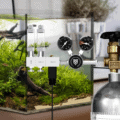
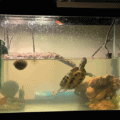
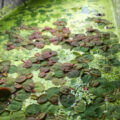
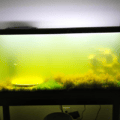
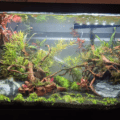

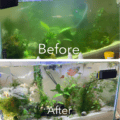
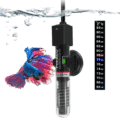
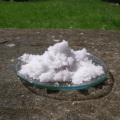
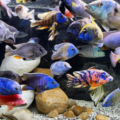
1 thought on “Best Rocks for Elegant & Risk-Free Decor in a Cichlid Tank”